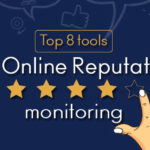Content is at the centre of all digital marketing efforts. But how do you ensure that your content reaches your readers once it is ready ?
There are many channels to make sure your content is read by the right audience. Email, SEO, Social media, PR, Paid advertisements and videos are some of them.
Social media is one of the most important platforms to promote your content. According to CMI 93% of B2B marketers list social media as one of the top five content marketing tactics.
Here is the breakdown of social media platforms used by marketers.
Source CMI
Content marketing and social media go hand in hand. Good content has no value without being promoted on social media. And social media marketing will fail without good content strategy.
Social media should always be a part of the overall content marketing strategy. It is important to ask following questions before developing content:
- Who are we writing content for? Who is our audience
- What social media do they use?
- How much time do they spend on each platform?
- What are the most popular formats for each platform?
Social media is a way to reach your target audience. It is the vehicle which is fueled by good content. This is how social media can support your content marketing:
1. Reach out to the world
Great content is no good if it does not reach people. Social media is one platform where you can promote your content to reach maximum number of users.
Social media has more than 2 billion users currently. Facebook users alone generate around 3.2 billion likes and comments everyday! It is undoubtedly the best platform to reach to large audiences and engage with them. Sharing your content on social media will help you to get more traffic and higher conversions for your website.
2. Let users do the marketing
The beauty of social media is that the users themselves will market content for you. Content that is relevant and timely will be shared multiple times by users. A positive word about your brand on Facebook is seen by other members and builds trust in your brand.
You can also encourage influencers to share your media. Influencers are users with large following and good engagement on social media platforms.
Influencer marketing is one of the top content marketing strategies for 2017 and has been successfully used by big companies like Adidas as well as small start ups.
3. Get Real -time feedback
Social media is also a good way to listen to your audience. Many companies use Facebook platform for customer support, feedback and online community of customers.
It opens up two way communication between your business and its users. You can use this platform to generate new content ideas that your readers want.
You can also create polls in Facebook to know what your readers want to read about.This will keep your content relevant and responsive.
4. Build a loyal community
Social media also allows you to build a loyal online community that is invested in your business. These community members identify with your brand and share a common purpose with your business (which is why they follow you).
You can build a sense of community amongst these users with the right kind of engagement. These are your loyal base of customers who will spread your message in the digital world.
5. Drive traffic
Facebook shares, re-tweets and instagram impressions can get you huge traffic. Social media drives more than 35% of traffic and is the top driver of website referral traffic.
Your shares and posts act as baits to lead to your website and leadpages. Make sure that your blogs and content are socially sharable. You can follow following best practices to maximize the use of social media to drive traffic and conversions.
How to make Social Media work for you
Follow the best practices below to make sure that your social media presence supports your content marketing strategy. Once you get this right a lot of your content marketing and content delivery will be done by your loyal followers automatically.
- Choose the right platform
As mentioned above you must ask yourselves what is the purpose of your content and who are you writing for. Once this is clear you must choose which platforms you must be present on. A B2B business must have a presence on LinkedIn and Slideshare while Vine may not be so important.
There is no hard and fast rule however. Figure out your brand personality and your buyer’s behaviors. Different platforms can also be used to portray different sides of your brand personality.
- 4-1-1 Strategy
This is a strategy recommended by Andrew Davis, author of Brandscaping. It recommends that out of every 6 pieces of content shared,
-4 should be popular or interesting content by other influencers
-1 piece should be your own and educational
-1 piece should be sales-related
Again, this is not a hard and fast rule and should be tweaked according to your industry. However, the important point here is to share a lot of good content by other influences. This keeps you social and also gets influencers to notice and remember you.
- Visual Content
Keep your content visual to get maximum shares on social media. According to Kissmetrics photos get 53% more likes and 84% more click-throughs on links than text-based posts.
Use infographics, videos and compelling pictures to get to your point quickly. Nobody likes to click on lengthy text on social media. Optimize your photos so that they do now appear cropped or odd on social media.
- Add social media sharing buttons
Use social media sharing buttons on your blogs and sites. You can also insert tweet text in your blog. Use plug-ins to add these to your site. Ease of sharing will make a big difference to your share number as 51% of users access web on their phones.
- Current topics
Use tools like Google Trends and Buzzsumo to find out topics of conversation on social media. Keep your topics relevant and fresh.
You can use industry events, sports tournaments or political elections to spike interests in your posts. Keep your posts focused rather than generalized for most part.
- Listen to your audience
Keep a close eye on your social media accounts. Closely monitor the likes, comments and feedback. What are the posts that are doing well?
Which platform drives maximum engagements and why? Learn from your experience and continuously improve your content marketing strategy accordingly.
Social media is where you promote your content. It is an important part of a content marketing process and cannot be separated from it. In fact, introducing your content before your target audience would be difficult without depending social media platforms.











